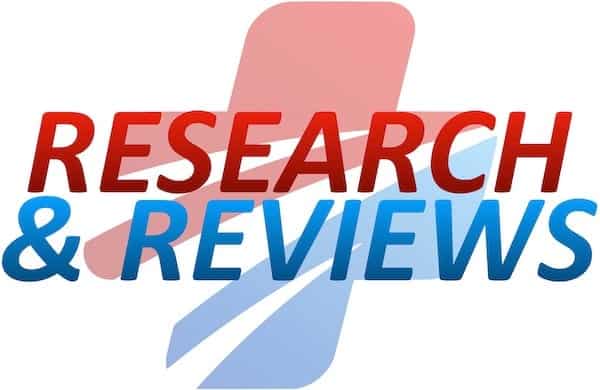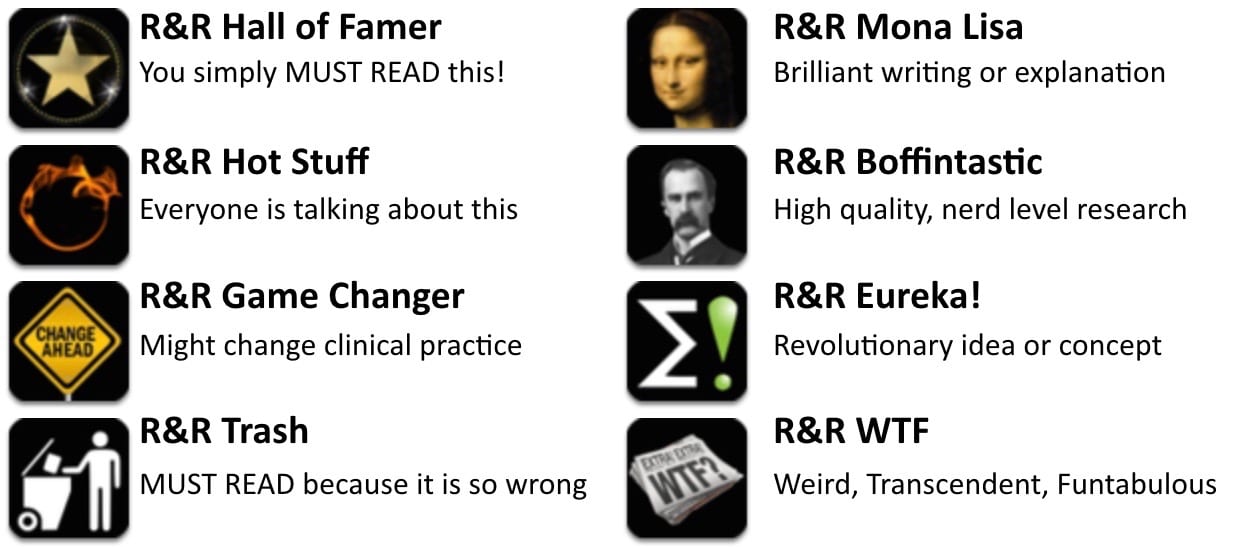R&R In The FASTLANE 026
Welcome to the 25th edition of Research and Reviews in the Fastlane. R&R in the Fastlane is a free resource that harnesses the power of social media to allow some of the best and brightest emergency medicine and critical care clinicians from all over the world tell us what they think is worth reading from the published literature.
This edition contains 8 recommended reads. The R&R Editorial Team includes Jeremy Fried, Nudrat Rashid, Soren Rudolph, Anand Swaminathan and, of course, Chris Nickson. Find more R&R in the Fastlane reviews in the : Overview; Archives and Contributors
This Edition’s R&R Hall of Famer
Green SM. A is for airway: a pediatric emergency department challenge. Ann Emerg Med. 2012 Sep;60(3):261-3. Epub 2012 Apr 19. PubMed PMID: 22520991 – [Fulltext]
- A recent study in Annals of EM found that only half of pediatric emergency intubations were successful at the first attempt.
- This commentary is essential reading and leads to the polarising political question: “Who is best qualified to intubate a child in an emergency?” A pediatric emergency physician who exclusively intubates children but does so only rarely (2 to 5 times per year, according to the above data) or a general emergency physician comfortable intubating adults who occasionally intubates children as well?
- Recommended by Chris Nickson
Winters ME, Mitarai T, Brady WJ. The critical care literature 2010. Am J Emerg Med. 2012 Sep;30(7):1268-73. Epub 2011 Nov 17. PubMed PMID: 22100483
- Concise summaries with insightful interpretation of some of the big critical care papers of 2010 – sepsis, vasopressors, trauma and cardiac arrest are all covered. It’s interesting that this paper was accepted in August 2011 and gets published in September 2012 and is about papers from 2010 (that were probably accepted 1-2 years earlier). Is it just me or is something wrong with the publishing process here?
- Recommended by: Chris Nickson
Abbasi K, et al. Four futures for scientific and medical publishing. BMJ. 2002 Dec 21;325(7378):1472-5. Review. PubMed PMID: 12493672; PubMed Central PMCID: PMC139045
- Although a little dated (e.g. pre-Twitter) this is a lucid overview of the forces that will determine the future of medical publishing, with four possible outcomes. There is resentment in the academic community that they have to pay for information that they create, marginal costs of electronic information are minimal, doctors are overwhelmed with information but can’t find what they need (‘information paradox’), most published scientific literature is low quality… The list of factors is endless. Change is inevitable. Oh, and the four future worlds are named after the Simpsons, brilliant. The Lisa world is here – vive la FOAM.
- Recommended by: Joe Lex and Chris Nickson
Naghshineh S, et al. Formal art observation training improves medical students’ visual diagnostic skills. J Gen Intern Med. 2008 Jul;23(7):991-7. PubMed PMID: 18612730; PubMed Central PMCID: PMC2517949.
- With the approaching ACEM ASM in Hobart, it seems like a good time to explore articles that link art and medicine. As such, this little number from Harvard finds that exposure to formal art training improves clinical skills. I just love the idea of this!
- Recommended by: Domhnall Brannigan
Farzad, A. The Advancing Role of Technology in Emergency Medicine Education and Training: Interview with Scott Weingart, MD. Commonsense 2012; 19(4):24-27 [Fulltext]
- This four page interview with Scott Weingart on education (especially FOAM) is pure brilliance.
- Recommended by: Joe Lex
Patel K, et al. Lifespan and Cardiology. Br J Cardiol 2009;16:299–302 Fulltext
- This is of interest to us as Emergency Physicians largely because of the wonderful Table 5 which shows that “Accident and Emergency” doctors have an average life expectancy of 57.5 years (+/-16.6) which is worse than every other specialty by 15-20 years. Delving deeper it becomes clear that the reason for this is one of two things: either they made it up, or using the obituary pages of the BMJ is a somewhat ad-hoc way to gather data. A great tongue-in-cheek read which probably tells us more about who values the place of the BMJ in medical circles than about true mortality rates!!! I can’t nail down the PMID for this one, but the link is to full text of the article.
- Recommended by: Domhnall Brannigan
Cureton EL,et al. The heart of the matter: utility of ultrasound of cardiac activity during traumatic arrest. J Trauma Acute Care Surg. 2012 Jul;73(1):102-10. PubMed PMID: 22743379.
- This study could be a game changer in traumatic arrest evaluation using ultrasound and its evaluation for cardiac activity. “ultrasound evaluation of cardiac motion in pulseless patients with trauma may be a rapid way to help determine which patients have no chance of survival in the setting of lethal injuries, so that futile resuscitations can be stopped”
- Recommended by: Laleh Gharahbaghian
- Learn more: Sonospot
Reißig A, et al. Lung ultrasound in the diagnosis and follow-up of community-acquired pneumonia. A prospective multicentre diagnostic accuracy study. Chest. 2012 Jun 14. [Epub ahead of print] PubMed PMID: 22700780.
- This is a must read that could be the start of changing medical practice in the future once physicians become more savvy sonographers, possibly eliminating the chest radiograph as a diagnostic tool for pneumonia diagnoses.
- Recommended by: Laleh Gharahbaghian
- Learn more: Sonospot
Chris is an Intensivist and ECMO specialist at The Alfred ICU, where he is Deputy Director (Education). He is a Clinical Adjunct Associate Professor at Monash University, the Lead for the Clinician Educator Incubator programme, and a CICM First Part Examiner.
He is an internationally recognised Clinician Educator with a passion for helping clinicians learn and for improving the clinical performance of individuals and collectives. He was one of the founders of the FOAM movement (Free Open-Access Medical education) has been recognised for his contributions to education with awards from ANZICS, ANZAHPE, and ACEM.
His one great achievement is being the father of three amazing children.
On Bluesky, he is @precordialthump.bsky.social and on the site that Elon has screwed up, he is @precordialthump.
| INTENSIVE | RAGE | Resuscitology | SMACC








